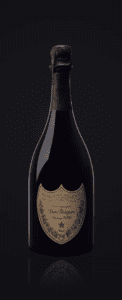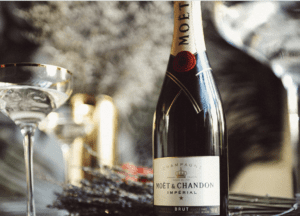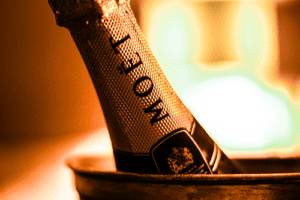Valentine’s Day is soon approaching, and we think to bring out a little bubbly Champagne to toast our loved ones. The question often comes up, ‘do I get the Vintage champagne or a non – vintage’? Like pasta or a pizza there probably is not a bad bottle out there, but it is good to know their differences, further to the price tag.
First and foremost, a true Champagne must come from the Champagne region in Northern France. Using the name Champagne is legally protected by EU law.
So, what is the difference between vintage and non-vintage champagne, other than the price tag? Unlike what the name vintage implies, it does not mean it is old. Surprise – right? Vintage, when referring to Champagne basically means the Champagne has been made from one year’s grapes. Therefore, that bubbly wine will contain the grapes from a specific year. Non- vintage ones are made from a multi-blend of harvests from numerous years’ grapes. An easy way to determine if it is vintage is to look for a date on the bottle. If you find a date on the bottle it means it is vintage and made from grapes harvested that particular year.
Although the grapes are harvested all in one year, it doesn’t mean the grapes are of the same variety; you will find a blend of grapes such as Pinot Meunier, Pinot Noir and Chardonnay as the commonly used grapes but all still from the same year.
Diving in Deeper….
 Is age a factor in vintage champagne? Yes, age does play a role in the production, as Vintage Champagne must mature for at least three years after its first fermentation, offering more complexity in taste and texture. Non -vintage champagne matures in as short as 15 months (usually they are kept for longer though). Vintages are produced only about three to four times in a decade thus making up only about 5% of the total Champagne production. This makes them rarer to find and therefore the costs elevate!
Is age a factor in vintage champagne? Yes, age does play a role in the production, as Vintage Champagne must mature for at least three years after its first fermentation, offering more complexity in taste and texture. Non -vintage champagne matures in as short as 15 months (usually they are kept for longer though). Vintages are produced only about three to four times in a decade thus making up only about 5% of the total Champagne production. This makes them rarer to find and therefore the costs elevate!
In one decade, a while ago, Dom Perignon produced only one vintage Champagne. Due to more recent technology and knowledge enhancement, we have seen production increase drastically.
Aged champagne
Some Vintage bottles are aged from 20-60 years and their value appreciates the older they are. Standard aging is around 10 years for optimum quality. It is recommended to buy them young such as a 2006 bottle and let them age where they tend to increase in value and complexity. On the other hand, the non-vintage bottles should be drank within one and maximum of 2 years. Drink up!
So, does being from one year make any difference in the taste?
Well, the winemakers decide which years are deemed “good years” to make a Vintage year. Due to the Champagne area where the grapes are grown being heavily affected by cold and freezing in the northern parts of France, some years are more suitable than others for the grape harvest. The finest years for the harvest will become a vintage year, therefore, making the vintage champagnes tastier.
Is it worth the extra cost? To the refined palate, a Vintage Champagne will be greatly appreciated for its complex nature and that they are unique. Vintage bottles use only the best of the grapes and spend much more time on the lees. The lees are the leftover bits of yeast from the secondary fermentation. This extra aging produces a deeper flavor.
Any good vintages to keep in mind?
 Current bottlings from exceptional years on the shelves now are the years 2004, 2005, 2006, 2007, and 2008 and they are currently ready to drink.
Current bottlings from exceptional years on the shelves now are the years 2004, 2005, 2006, 2007, and 2008 and they are currently ready to drink.
At any one time, you will find dozens of brands and vintage years available at the same time. For instance, Louis Roederer Cristal has, at the moment, four different vintages on the market. They can range from hundreds of dollars to thousands.
Vintage Champagnes are released whenever the producer chooses to release them unlike a wine, such as Bordeaux, that has a standard and expected release date in the year.
The non-vintage brands try to produce consistency in taste to appease the market value. They like to have a recognizable character. To be able to achieve this, the different wineries blend their young wine with their reserve wine just before it undergoes the second fermentation. This is where the “fizz” is created.
Champagne Service
The experts on how to serve Champagne do agree that a vintage bottle should be served at 12-14 degrees Celsius rather than the typical 6-8 degree C for non-vintage. It is preferred to use flutes that have a larger rounded bottom rather than the classic tall skinny flute as the rounded side helps concentrate the bubbles in the middle of the glass.
Bottles size can make a difference as well. A magnum is 1.5 liters and twice the size of a standard bottle at 75cl. It is also half the size of a 3-liter jeroboam. The larger bottles tend to age more slowly and have less oxidation allowing them to taste fresher.
Therefore, if in doubt go larger.
 Champagnes come with different levels of dosage (sugar levels). The lowest level with no sugar is called Zero Dosage, often paired with sushi and then we move to extra-Brut, Brut, Extra-Dry, Sec, Demi-Sec and Doux with almost 50 grams of residual sugar, often served with dessert.
Champagnes come with different levels of dosage (sugar levels). The lowest level with no sugar is called Zero Dosage, often paired with sushi and then we move to extra-Brut, Brut, Extra-Dry, Sec, Demi-Sec and Doux with almost 50 grams of residual sugar, often served with dessert.
Choosing your bottle, finally….
It will depend on your taste and budget as to what you choose. Champagne does not need to break the bank and can be enjoyed for the festive celebratory moment or for a lovely enjoyable night at home. Whether Vintage or Non-vintage, drink up and cheers.